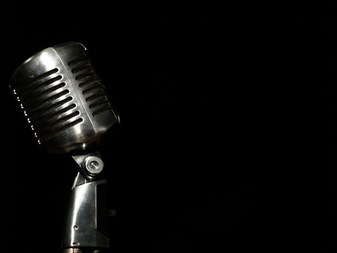
These poets are not referencing dysfluent speech in the same way I do. Rather, they use ‘stutter’ to convey information about a character. Metaphors rely on a shared understanding of a concept, and the lines quoted above only make sense within this context. When a fluent poet says stutter they are referencing the collective understanding that stuttering is indicative of anxiety, dishonesty, incapacity, or inferiority. These analogies persist because stereotypes about dysfluency are so widely shared and firmly held. The writer uses stutter as a metaphor because they know it will concisely and illustratively communicate their intended concept.
This is not limited to dysfluency; other disabled voices and bodies are common objects in writing. Almost every abled writer I know has at some point appropriated the language of disability in their work, referring to surprise as paralyzing, fear as crippling, or blindness as ignorant, or comparing capitalism to cancer. Employing references to disability as metaphor relies on a collective understanding that disabled bodies are broken, inferior, less valuable, and that they appropriate for use as objects of comparison.
It is important to note that the appropriation of disability occurs by abled writers, who are positively sanctioned for objectifying disabled voices. Disabled speakers writing about themselves and their experiences are less-positively sanctioned. A cliché phrase in poetry slam when facing a particularly challenging competition is “do your cancer poem!”, meaning pull out your best work. Almost never is this a poet who has cancer, but instead a poem about someone else who has died of cancer. This type of cancer poem typically scores very well.
Abled writers who use my voice as a metaphor interpret it differently than I do. They aren’t thinking about dysfluency as an identity at all, because they aren’t thinking about dysfluent people. They are looking to describe a nervous character and they settle on ‘stutter’ or they are writing about an abnormal rhythm and are reminded of the way our speech catches in their ears. Using ‘stutter’ as an analogy separates our speech from our bodies, strips it of meaning and nuance, and reduces it to stereotypical repetitions and elongations.
Even when the use of stuttering is not directly pejorative – when it is compared to something other than a nervous child, or used in an original way – the decoupling of dysfluency from speech and from the person is incredibly problematic. Fluent writers do not understand the social components of dysfluency, the way that dysfluent people relate to our speech, or the ways that they are complicit in perpetuating stereotypes. Their intention has nothing to do with my voice, but their word choice is born out of ableism and speech discrimination. In critiquing writers who appropriate disability, I am challenging the power that abled writers hold over disability narratives.
-Erin


 RSS Feed
RSS Feed
